Leh Ladakh for more than a decade now has been the ultimate dream vacation for young Indians. So we at Trodly have created a Leh Ladakh travel guide, so you don’t have to scour the internet looking for every detail. This Ladakh travel guide covers Leh Ladakh itineraries, places to see and things to do in Ladakh and all information required for planning a Ladakh trip. Ladakh has become more than just an amazing adventurous trip. Be it a family trip, honeymoon or a bike trip with friends, Leh-Ladakh tour is always one of top options.
Consider this your one stop guide for planning your next Ladakh tour. The budget, duration and itinerary for your Ladakh trip will depend on many things. How you plan to travel and what time of the year you are going there being primary.
Contents
- 1) Best Time for Ladakh Trip
- 2) How to Travel to Ladakh?
- 3) Inner Line Permits (ILP) in Ladakh
- 4) Popular Ladakh Itineraries
- 5) Places to Visit on Leh Ladakh Tour
- 6) Offbeat Places to visit in Ladakh
- 7) Prepare for Trip to Ladakh
- 8) Things To Do In Ladakh
- 9) Festivals Of Ladakh
- 10) Accommodation During Leh Ladakh Trip
- 11) Cuisine and Food of Ladakh
- 11) Things To Keep In Mind While Traveling In Ladakh
- 6 Best Road Trips from Mumbai
- 12 Hill Stations near Mumbai You Must Visit
- 10 Most Scenic Indian Train Journeys
- Top Things To Do in Havelock Island of Andamans
- India’s most visited place is not the Taj Mahal!
- 7 UNESCO Natural World Heritage Sites In India
- 7 Weekend Excursions from Mumbai
- 11 Offbeat Places in West Bengal You Must Visit
1) Best Time for Ladakh Trip
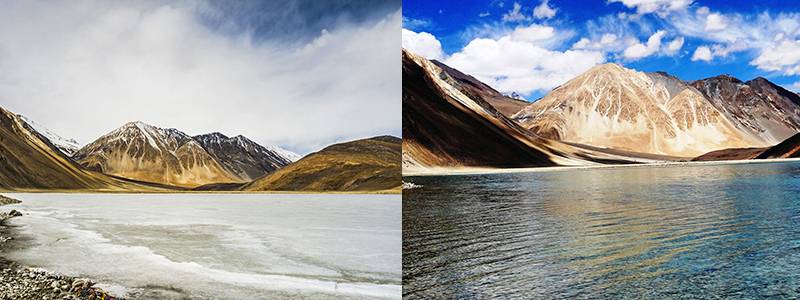
Ladakh Weather
Surrounded by land and high Himalayan mountains on all ends, Leh Ladakh is susceptible to extreme temperatures. It is rightly known as the only place in the world where you can sit in one place and get both, a sunburn and a frost bite at the same time. However, there are two best periods for visiting this enticing land – depending on what kind of traveller you are and what you aim to do. So the question remains, what season is best for what?
Months: April to October
Ladakh Temperature Range in Summer: -3°C to 30°C
Summers in Ladakh region are the most pleasant. The sun dazzles across the clear, blue sky, rivers flow with full speed and the snow on mountain tops glistens at it’s brightest. The warmer temperature persuades hibernating mammals to show up and scuttle around, while flowers begin to blossom and the towns come alive. This is perhaps the best time to visit if you want to cover all major destinations, undertake adventure activities and have an easy going trip.
Months: November to February
Ladakh Temperature Range in Winter: -30°C to 15°C
Very few tourists dare to visit Ladakh the snowy land in winters. Ladakh weather in time period between November to February is characterized by heavy snowfall and extremely low temperatures, sometimes falling up to -30°C. Most of the major hotels and guesthouses are shut at this time, hence, local homestays are the best option to dwell in. The Chadar Trek is best known to be undertaken during these harsh winters, providing a great experience for the adventure seekers. Winter also brings with it plenty of festivals that are celebrated all around Ladakh. If you’re up for the challenge and want to visit like a traveller, not a tourist, winter is the time to go.
2) How to Travel to Ladakh?
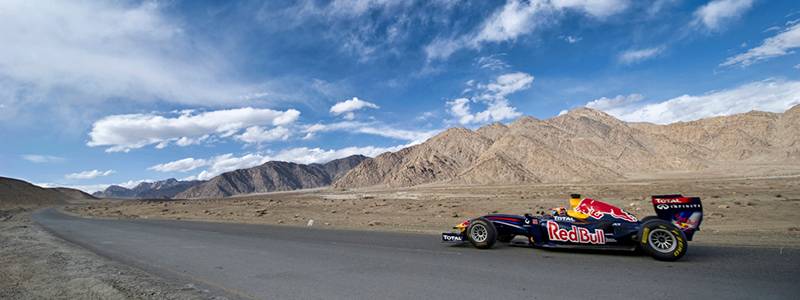
Situated in the northernmost part of Jammu and Kashmir, India, Ladakh is accessible by both road and air. While the road journey is long, tough and beautiful, the flight from Delhi is short and pleasant. Delhi to Ladakh can road trip can be planned via Srinagar or Manali.
Reaching Ladakh by Road
A road trip to Ladakh will surely be a memorable one. Varying landscapes, varying temperatures and varying road types will ensure that you are up for the time of your life. You can embark on this journey by car or bike. If you are planning to drive or ride yourself to Ladakh from Delhi , Srinagar or Manali, the level of planning needed goes to another level altogether.
Manali to Leh Highway (~474 Kilometers)
Reaching Leh via Manali is the most common and preferred route, after all, this is one of the most challenging parts of the whole Ladakh adventure. Manali can be reached from both Delhi and Chandigarh in a day. Overnight buses are a great option to land early in Manali. If driving or riding from Delhi then you will have to start real early to reach Manali before sun sets.
There are many operators renting motorcycles in Manali as well but you would need to book well in advance. Also, make sure the bikes are in good condition.
State transport buses and private jeeps also run between Manali and Leh. Buses take 2 days to reach Ladakh and involves overnight stay at one of the camps. Manali-Leh highway usually opens mid-May and remains open until late October.
Srinagar to Leh Highway (434 KMs)
Srinagar is another popular choice to visit Ladakh by road. This Ladakh road trip involves crossing the famed Zozila Pass. Srinagar-Kargil-Leh road is a slightly better option over Manali-Leh if you want to minimize the chances of road closure due to bad weather. Also if travelling via Srinagar you can start earlier then the time Manali-Leh highway opens-up for general public.
Srinagar – Leh stretch is generally done over two days with a night halt at Kargil. On the way, you would cross scenic meadows of Sonmarg, daring heights of Photu La. The popular Magnetic hill and Pathar Sahib also fall on this route, few hours short of Leh. Srinagar-Leh highway opens during mid to late April and remains open until early November.
Trip to Ladakh by Car
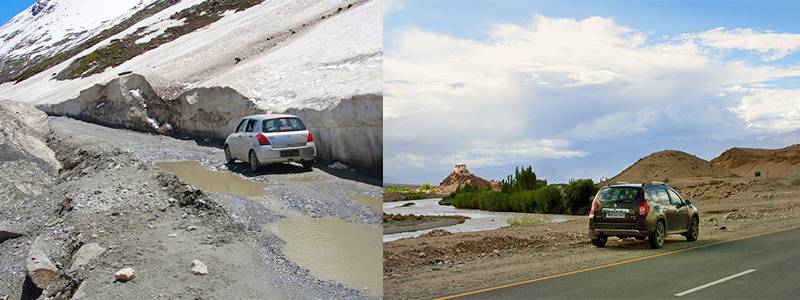
A car road trip is ideal, shielding you from the extreme temperatures, winds and maybe snowfall. If you’re ready to gear up the engines, you have two above routes to choose from.
Ladakh Trip on Motorcycle
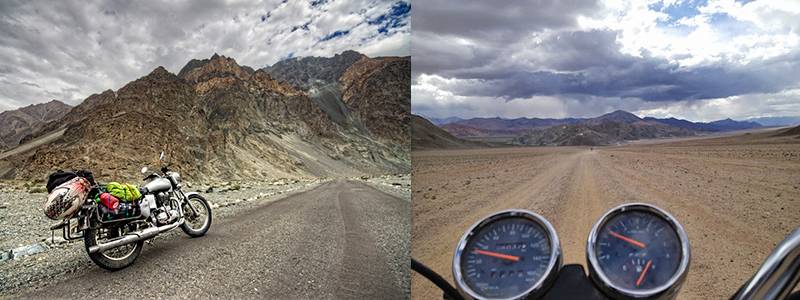
Plenty of bikers dare to ride up to Leh from Manali or Srinagar. The journey is long and treacherous, but gazing at the stunning view outside is well worth the effort. You also have option to fly into Ladakh and then start you bike trip from there. This allows you to do this dream trip on much lesser time. If you wish ride from Manali – Leh then you would need about 10 days to complete the trip. You also have option to do Manali – Leh one way and flyback from Leh. This does cost you a bit more though as most Ladakh Bike Trip Package operators would charge little extra for this.
https://www.trodly.com/activity-798-ladakh-motor-bike-tour-manali
https://www.trodly.com/activity-797-ladakh-motor-bike-tour-leh
https://www.trodly.com/activity-817-manali-leh-srinagar-bike-tour
Flights to Ladakh
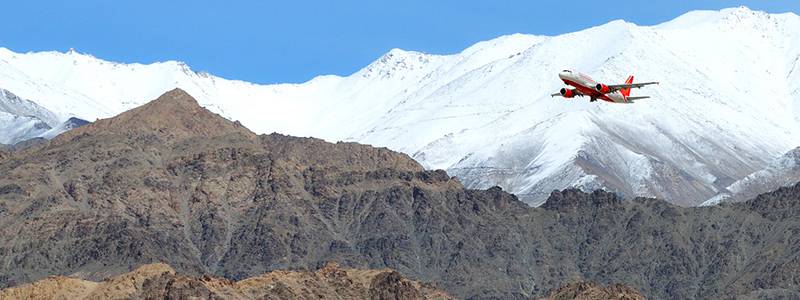
Flights to Leh are available from Delhi and Mumbai. Most of these flight start early morning as landing in Leh is easier before noon. Flights are also available to Leh from Srinagar and Jammu. Leh Airport is close to the city and takes 15-20 minutes drive from the city. Taxi rates vary between INR 600-1000 for a one way drop.
3) Inner Line Permits (ILP) in Ladakh
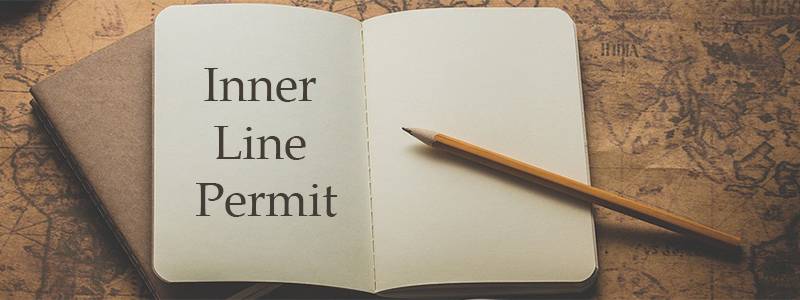
As of 2014, Inner line permit is no longer needed by Indian Nationals for Nubra Valley, Pangong Tso and Tso Moriri but still needed for locations such as Hanle, Chusul, beyond Loma bend, Marsimik La, Chumur and Turtuk. Please check with a local travel agent or tour operator for latest on these guidelines. In any case most Ladakh tour package will have permits taken care of.
All Foreign nationals still need to obtain PAP (Protect Area Permits) in a group of two or more travellers through the District Commissioner’s Office in Leh or via an authorized travel agent. The PAP specifies where you can visit and stay overnight. The PAP is checked at Nubra’s various checkpoints. Before booking your Ladakh holiday make sure to check on these things and get all the information.
Even though permits are no longer require for Indians but both Indians and foreigners need to register at Dras, Rumtse and Sarchu, in case they are traveling by road.
4) Popular Ladakh Itineraries
1. Manali – Leh – Nubra Valley – Pangong Tso
This is the most popular Ladakh trip itinerary. Be it a jeep safari, self-drive or a bike trip this is the most straightforward Ladakh tour covering most popular places in the Ladakh region. Most tour operators suggest similar holiday packages and this tends to be low on cost as well.
2. Manali – Leh via Tso Moriri, Hanle & Pangong Tso – Nubra Valley
This Ladakh tour is best suited for a road trip or bike trip starting in Delhi or Manali. You get to cover main attractions of Ladakh along with Tso Moriri Lake.
3. Leh – Khardung La – Nubra Valley – Pangong Tso
An ideal Ladakh trip itinerary if you are flying to Ladakh. Takes 5-7 days to complete. Perfect for those short on time.
4. Delhi – Srinagar – Leh – Manali
This is an ideal trip but takes about 14 days to complete. You get to see the best of Himachal, Ladakh and Kashmir.
5) Places to Visit on Leh Ladakh Tour
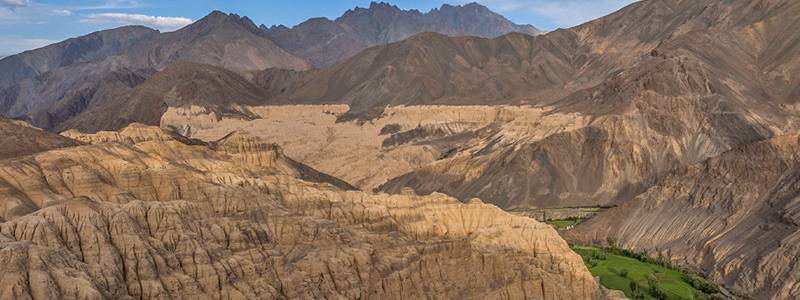
Boasting some of the highest passes in the world, Ladakh shows no mercy while flaunting all its beautiful places and destinations. It may be a task to decide which places to visit, especially when each of them seem so enticing. To make this task simpler, have a look at the places we suggest you must absolutely visit, followed by secondary destinations you might like to add to your itinerary. Ladakh region has some of the highest motorable passes in India if not the world. These highest motorable roads take you to Marsimik La, Photi La and relatively new Umling La pass.
Must Visit Places in Leh Ladakh
1) Nubra Valley
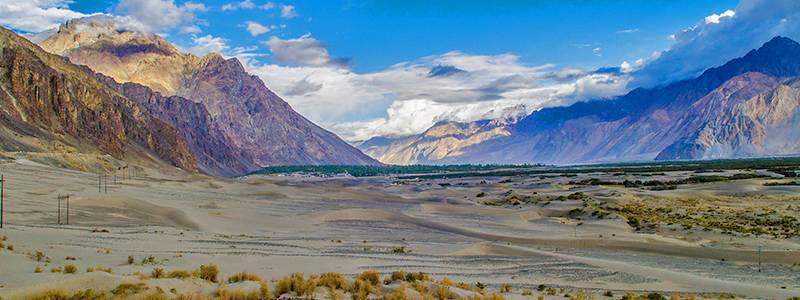
Wedged in the heavily glaciated mountains of the Karakoram Range, Nubra Valley is perhaps, one of the prettiest places in India. A topographical wonder, Nubra is an exciting amalgamation of deserts, forests, snow-capped mountains and a calmly flowing, icy river. As you gaze out at the valley, you’ll spot the occasional nomad, herds of double humped native Bacterian Camel and Himalayan Musk deer. You can choose to stay at Hunder or Diskit in Nubra Valley. If you are traveling to Turtuk then you have to go beyond Hunder.
The valley has clusters of villages here and there, where cheap accommodation is available. To visit Nubra from Leh, you’ll get the honour of passing the world’s highest motorable pass, the Khardungla Pass, where you must relish steaming hot Maggi. At Nubra itself, you can indulge in a camel safari, visit buddhist monasteries, take a hike and interact with locals and finally drive and camp at the Pangong Lake.
2) Pangong Tso Lake
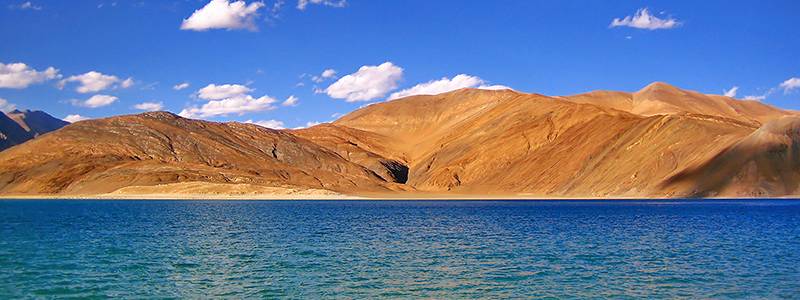
Pangong Tso redefines everything that a lake should be. It’s azure blue waters, complimented with the white sandy shore are a completely captivating sight, one you will never forget.
Though the Lake is only a 5 hour drive from Leh, you can also spend the night at one of the many campsites present by the shore. Accommodation is convenient and the food is also provided. Plenty of tourists also bring in their own camping gear and enjoy staying in tents by the tranquil lake. Sunrise by the lake is another breath-taking sight, especially since the lake reflects the sky to continuously change its shade of blue. Pangong Tso is definitely one of Ladakh’s major highlights, and should be a definite must-visit during your trip.
3) Leh
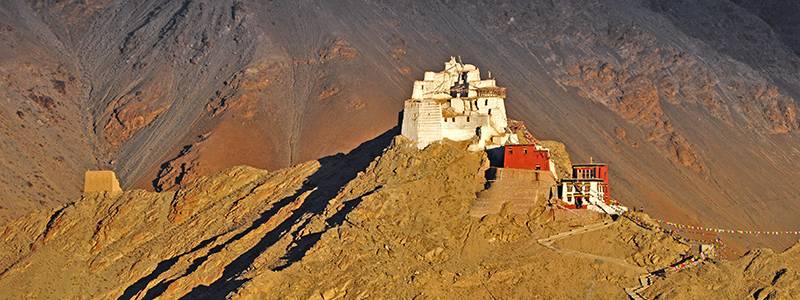
Of course, Ladakh’s capital city cannot be forgotten. A plethora of hotels and homestays offer good facilities, including hot water and tiled toilets. The Leh Market is the most buzzing place in the city, where you can gorge on freshly baked savouries from the German bakeries, or shop for some famous Pashmina shawls. Your shopping spree can continue with apricot goodies, followed by a large meal of momos and thukpa. Leh also has a variety of Buddhist monasteries and museums that you can visit as per your liking. The weather in Leh Ladakh around peak season is comparatively pleasant, the people are friendly, transportation is great and your visit will be worth every penny spent. Shanti Stupa and Thiksey monastery are a must visit places in Leh. .
4) Tso Moriri Lake
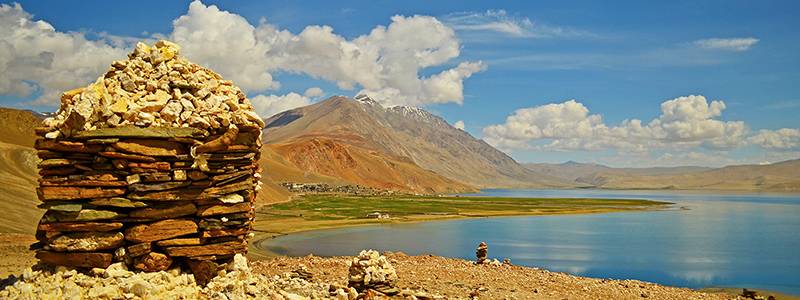
Due to its longer distance from Leh, Tso Moriri is not frequented by hordes of tourists. Here, towering mountains, snow-capped peaks, endless green fields and the deep blue waters stretch to the horizon, painting a mesmerizing sight. Since the lake is a Wetland Conservation Reserve, one cannot pitch any tents or construct anything right near the banks of the lake, however, basic accommodation is available in the form of campsites. The lake also attracts migratory birds, marmots and the occasional Tibetan wolves. Though winters get unbearably cold by the lake, you can make the most of the summer by signing up for hikes and walks around the lake. Popularly known as the ‘Mountain Lake’, Tso Moriri Lake is a perfect destination to explore the jewels of raw nature.
5) Zanskar Valley
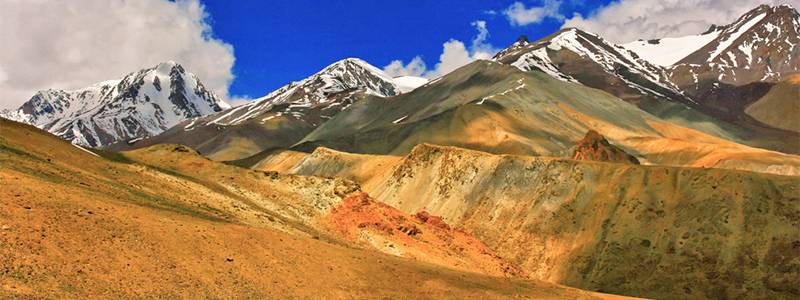
The hidden kingdom of Zanskar is one of the most isolated Himalayan valleys. Padum is its most habitable settlement, where tourists generally stopover for the night after a long, thrilling journey. The best way to visit Zanskar is from Kargil, where one single winding road takes you through rugged mountains, into serene valleys and past the mighty Drang Drung glacier. The valley entices adventure seekers to experience nature in its purest form, through rafting, trekking and mountain biking.
Other places in Ladakh worth visiting are Lamayuru Monsatery, Magnetic Hill, Spituk Gompa, Leh Palace, Phyang Monastery.
6) Offbeat Places to visit in Ladakh
1) Turtuk
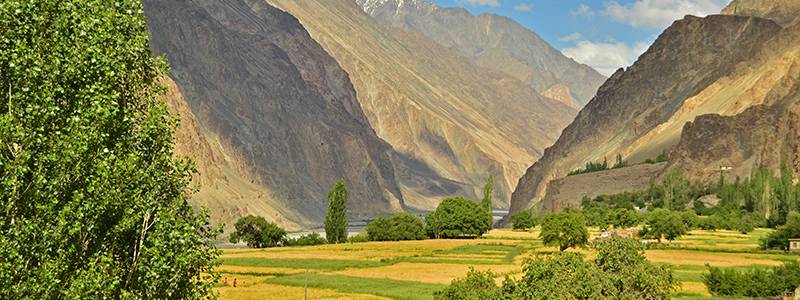
As you travel through Nubra Valley much beyond Khadung La, along the slithering Shyok River, just away from the LOC is the dreamy hamlet of Turtuk. As modest as can be, the village is a breath of freshness in the form of green pastures, in an otherwise barren landscape. A few guesthouses and homestays are the only option for accommodation, where humble locals prepare their delicacies for the few tourists that visit. Turtuk is an isolated village, where a faint BSNL signal is the only link to the outside world. Surely, visiting here, getting immersed in a life so pure will provide an experience you can never forget.
2) Hanle
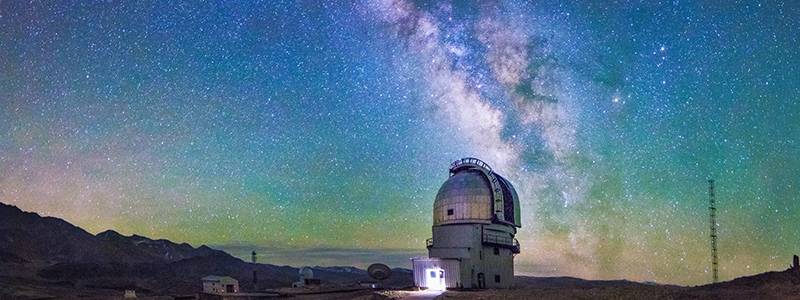
Home to the Hanle Observatory, the world’s highest observatory, the Ladakhi village of Hanle is an enchanting destination. Inhabited by just around 1000 people, the village has a sleepy vibe, especially since it lies away from any other human inhabitation. Hanle’s pride is the beautiful Hanle Monastery, which offers spectacular aerial views of the entire village, including the neighboring hills. Accommodation is limited, with basic amenities also lacking at times. However, staying in a basic homestay or campsite is the ideal way to experience this life devoid of urbanization, where gazing out at grazing wild horses among endless pastures is the best entertainment you can get.
3) Temisgam
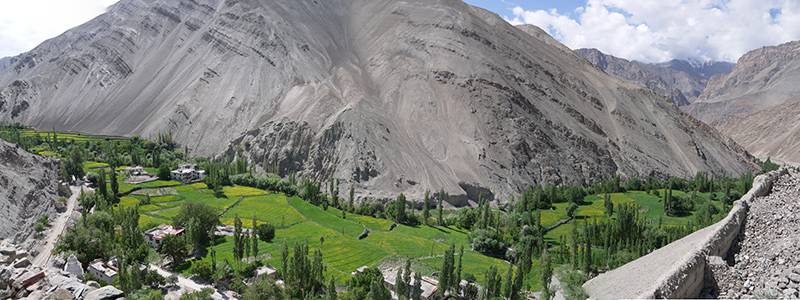
Temisgam is a quaint village located 100kms away from Leh. Known for its scenic barley fields, large number of apricot trees and hilltop buddhist monastery, the village is a wonderful place to stay overnight and explore. Humble homestays are the best option to interact with the locals and experience their modest lifestyles. The area around Temisgam also offers plenty of trekking and hiking trails along the rugged mountains.
Some other places on this list would be Suru valley, Chushul and picturesque Chilling.
Also Read: Ladakh Offbeat – The Hidden Gems of Ladakh
7) Prepare for Trip to Ladakh
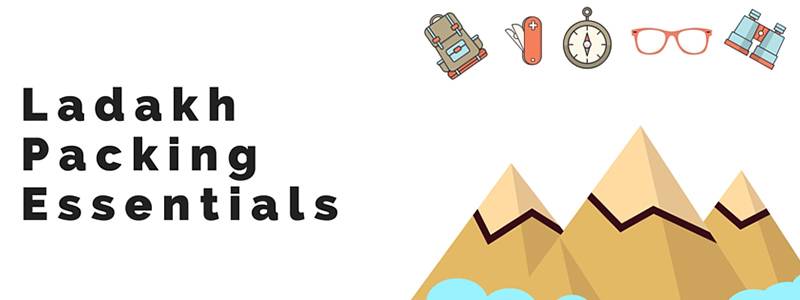
The first step to planning you Ladakh trip is to lock on dates and mode of transportation. Once these things are finalized, you should next work on your itinerary. Next comes to actually start preparing for the kind of trip you have decided on. Mind you, your actual preparation and things you need to carry will depend almost entirely on how are you traveling – Flying, taxi are self-driving a car or bike.
Prepare for Ladakh Bike or Car Trip
Now here again a lot will depend on whether you are driving yourself or taking a taxi and also on if you are part of a tour for bike ride. If travelling in taxi or part of professionally run motorcycle tour then you may not need to worry about spare parts and emergency supplies too much as support vehicles carry motorcycle spare, fuel, tools, water and snacks. These organized tours also have a mechanic with them to take care in case of a break-down.
Also Read: Which Ladakh Bike Trip Itinerary Suits You Best?
Things to carry for Leh Ladakh Bike Trip
- Complete riding gear: Jacket, pants, gloves, balaclava
- Water proof jacket
- Good quality helmet
- Biking / riding gloves (thermal lined)
- UV protect sunglasses
- Tent
- Small stove (for emergency or if you plan to camp)
- Sleeping bag (Do take a good insulating one as if needed it should be usable)
- Bungee cords
- Saddle bag / Backpack
- Foot pump: To fix punctures and check air pressure while on the route.
- Puncture repair kit and spare tube
- Good quality waterproof riding boots
- Jerrycans: To carry extra petrol/diesel so in case you run out.
- 500ml engine oil
- Electrical tape: For tying together parts and insulating damaged wires.
- Spark plugs / Chain link / Fuse
- Break cable/Accelerator cable/Headlight bulb
- Small length of electrical wire
- Tool kit
- Spare Car/ motorcycle key
- Documents: Driving license, registration papers, insurance, pollution under control certificate (PUC certificate)
Things to Carry for Ladakh Self-drive Car Trip
- Tent (for emergency situations)
- Small stove (for emergency or if you plan to camp)
- Sleeping bag (do take a good insulating one as if needed it should be usable)
- Foot pump: To fix punctures and check air pressure while on the route.
- Puncture repair kit and spare tube
- Electrical tape: For tying together parts and insulating damaged wires.
- Steel wires: To tie together parts in case of a breakage that can’t be fixed right away.
- Jump-start Cable: To jump-start your car with another car on the way.
- Jerrycans: To carry extra petrol/diesel so in case you run out.
- Engine Oil: Carry at least 500 ml engine oil to top up the engine if required.
- Headlight & Brakelight bulb: Spare parts are not easy to come buy except in Leh and Kargil
- Coolant: You may need to top up your coolant multiple times on the trip.
- Spare fuses: These are a must-carry
- Rope: If you need to tow the car in case of a major breakdown.
- Small Wooden Plank: You will then need a small wooden plank beneath the tyre to get some grip on few stretches where the mud and slush (snow + mud) makes you lose traction.
- Documents: Driving license, registration papers, insurance, pollution under control certificate (PUC certificate)
Common Packing Essentials for Ladakh
- Camera, spare batteries, recharge cable, adapter& enough memory cards.
- Photo Identity Proof: DL, Passport or Aadhar card etc. along with their photo copies.
- Air Tickets, Hotel Booking Vouchers and Trip Itinerary
- Phone & Travel Chargers: Though most areas will not get cell reception but still you need to carry travel chargers and power banks if you plan to use your phone.
- Lip Balms, Sunscreen and Moisturizers or Cold creams are must carry item
- Torch – for midnight toilet trips and during power cuts
- Personal Hygiene: Hand Sanitizers, Deodorants, Paper soaps, Toothbrush, Toothpaste and shaving kit etc.
- Snacks, e.g. Dry Fruits, Candies, & Energy Bars
Basic first-aid kit
Carry bandages & some medicines for general illness like fever, nausea, stomach upset, cold etc.
- Paracetamol
- Diamox / Acetylzolamide tablets (helps with acclimatisation)
- Diahorrea tablets
- Throat lozenges
- Aciloc tablets (Acidity tablets)
- Cough and Cold tablets or syrup (Benadryl)
- Aspirin, ibuprofen, or Tylenol for muscle pain or headache
- Painkillers
- Pain relieving balm or spray
- Bandages / Medicated cotton
- Antiseptic liquid / cream / spray
- Water purification tablets / chlorine tablets
- Rehydration salts (Electral) / Glucon D
- Any personal medications
Clothing
Carry clothes that can be worn in layers is much, wearing in layers will keep you much warmer than just one heavy jacket.
- Long sleeved shirts/ t-shirts- long sleeves protects your arms from the Sun as it’s easy to get sunburn at high altitude) – layers are also useful
- 2-3 Pairs of thermal inners
- 2-3 Sets of heavy woollens
- Lightweight wind-/rain- proof jacket
- 1 Heavy woollen jacket: It’s always handy and best to keep as you do not know when weather can turn bad here
- 3-4 pairs of woollen socks
- Boots: comfortable & sturdy; insulated shoes if visiting in winters
- 1-2 Woollen caps (wool/fleece hat, scarf)) and sun hat or cap
- Sunglasses to protect your eyes from UV rays and the reflections from snow.
- Gloves
Optional Items to Carry
- Binocular
- Book to read
- Altimeter
- MP3 Player / iPOD
- Earplugs
8) Things To Do In Ladakh
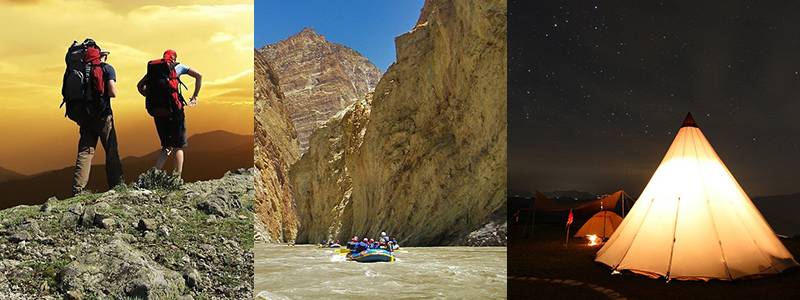
Ladakh is most definitely an adventure seeker’s paradise. It is a true topographical wonder, providing innumerable opportunities to get the adrenaline pumping. Though Ladakh’s serene natural surroundings may tempt you to sit back and admire the beauty of the hills, we urge you to get outside and live in the moment. Here are some of the adventure activities you can take on when in Ladakh.
1. Trekking in Ladakh
Courtesy of Ladakh’s mountainous regions, challenging worlds highest passes and beautiful surroundings, trekking here is a delightful task. Best enjoyed with a large group or friends, trekking can be carried forward by booking a ready tour or signing up with a trekking company that’ll take you through the exact process. Especially for rookies, it is best to join in an organized trek group, rather than daring to venture out alone. Have a look at the popular trekking routes of Ladakh.
-
Stok kangri Trek
Altitude: 6150 m
Best Season: Mid-June to September
A fairly non-technical climb, Stok Kangri is an ideal combination of leisurely trekking and sightseeing. The route provides an insight into the cultural heritage of Ladakh, ensuring that the journey doesn’t just include climbing. The summit of this peak offers stunning views of Mt. Saser’s peak, a prominent part of the Karakoram Range.
-
Markha Valley Trek
Altitude: 3700 m
Best Season: June to September
The Markha Valley trek is a beauty in itself. The route is a major attraction since it takes you past glorious landscapes, green oasis, willow groves and colourful rose patches. Another regular sight during this trek will be canyons embellished with the multi-coloured Tibetan prayer flags gently swaying in the breeze. The Markha Valley Trek can be combined with a visit to Hemis National Park.
-
Sham Valley Trek
Max Altitude: 3750 meters
Best Season: May to October
The Sham Trek is perhaps the most easy going and pleasurable treks to undertake in Ladakh. It winds through hidden, dreamy villages, glistening streams and wild, natural beauty. You’ll be astonished to find natives unaware of the technological advancement of the world, living an earnest, nomadic life! A handful of monasteries of the Sham Kingdom will come on your way, making the trek an overall enjoyable journey.
2. National Parks in Ladakh
Best Season: April to June
Ladakh’s renowned Hemis National Park is a deemed as a snow leopard reserve. Visiting this high altitude national park will leave you fascinated with the alpine flora and fauna. The beautiful Zanskar River slithers across the park, feeding the wide range of animals and birds that call Hemis their home. The landscape is characterized by huge boulders, shrubbery, rugged valleys and the occasional patch of trees. Plenty of treks are available at the park, where spotting a snow leopard in its well camouflaged surrounding might just be the highlight of your trip! You can also triple the adventure by setting camp overnight at this one-of-a-kind national park.
3. Camping in Ladakh
As you take a step on the loose gravel, breathe in a gulp of fresh, cool air and look around at your surroundings, take a moment and admire the absolute beauty around you. Yes, while camping in Ladakh, you’re in for the experience of a lifetime. Step away from the technological world and escape the concrete jungles by setting camp by a glistening lake in the middle of nowhere, surrounded by nothing but mighty mountains and starlit skies. The most popular camping sites in Ladakh are:
-
Pangong Tso Lake
A stunning lake made famous by the film 3 Idiots, Pangong Tso is known for its colour changing behavior. The shades of blue vary at different times of the day, and are a true sight to observe. Nevertheless, you can camp here at already present campsites, or find your own spot along the lake and set camp. The area is peaceful, with nothing but a few accommodation facilities and barren land. Due to the lake, it tends to get extremely windy at night, hence, be prepared will all necessities before camping on your own. On the road trip to this lake you can spot some wildlife as well. Most common sightings are of Yaks, Marmots and Kiang (wild ass).
Snow Leopard. Snow Leopard is the apex predator of rocky alpine regions of Ladakh and perfectly adapted the cold climate, barren landscape of high altitude. … Bacterian Camel. … Wild Yak. … Marmot. … Brown Bear. … Red Fox
-
Tso Moriri Lake
Plenty of campsites, hotels and villages are situated around this lake, so finding accommodation would not be a problem. However, if you have your own camping gear, make sure to check with the villagers before setting up, since most of the land around the lake belongs to them. Also, the lake attracts wild animals, especially in the night, so make sure to set camp as close to the villages as possible for safety.
4. River Rafting in Leh Ladakh
An adventure activity with an extreme thrill level, rafting along the Zanskar and Indus Rivers in Ladakh will leave you drenched in happiness.
-
Zanskar River Rafting
Grade: 3 and 4
Best Season: July to August
Experience Ladakh’s canyons in all their glory, as you raft through stunning gorges into the cultural Zanskari kingdom. The journey down this river calls for an ultimate whitewater adventure, which requires a few hours or days of intense rafting and expedition. It provides the best experience during the Himalayan summer, and can be accessed from the Zanskar Valley, that’ll provide sights of fluttering Tibetan flags, monasteries and canyons.
-
Indus River Rafting
Grade: 2 and 3
Best Season: June to August
The Indus River rafting route streams across breathtaking landscapes, from high cliffs with monasteries, along the terrains of Zanskar range and beautiful floral valleys. There are plenty of routes to take along the Indus River, the popular ones beginning from Phey, Nimo and Upshi. Each route caters to people of different capabilities and wants.
5. Paragliding in Ladakh
Cut across the blue Ladakh skies and soar like a bird as you experience the thrill of paragliding. Popular paragliding spots include Leh and Khardung La pass, where a few adventure companies offer these services.
6. Others
Apart from these well-established activities, Ladakh also offers mountain biking, jeep safari, camel safari, skiing and horse polo, which can be availed from most of the major tourist destinations, especially at Nubra Valley.
9) Festivals Of Ladakh
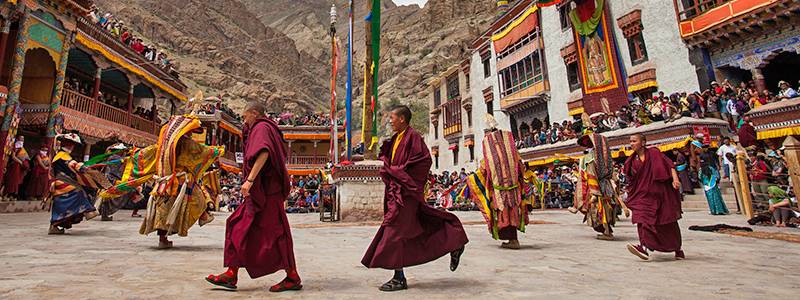
When it comes to celebration, Ladakhis don’t hold back. Their vibrant culture gives them plenty opportunities to celebrate or worship. Based on different folklores, customs and historical stories, an array of festivals are celebrated across the state. Here are a few of the main ones you should try including in your itinerary:
I) Sindhu Darshan Festival
Location: Shey Manla, near Leh
Date: June 1 to June 3
This is a 3-day festival, which celebrates communal harmony on the banks of the Indus River. The festival is also a symbolic salute to brave soldiers of the country, where people of all regions and religions come together to dance and perform traditional folklores.
II) Hemis Festival
Location: Hemis Monastery
Date: July 14 to July 15
Hemis Gompa, the largest and richest Buddhist monastery in Ladakh hosts the annual festival called Hemis Festival. The state holiday sees locals wearing traditional clothes, vibrant headgears and loads of jewelry. Accompanied by musical drums, long horns and cymbals, the Lamas perform the famous sacred masked dance, known as Chaam.
III) Ladakh Festival
Location: All over Ladakh
Date: September 20 to September 26
The brilliant Ladakh Festival is a myriad of colour, music, fun and excitement. A large scale procession winds its way through Leh Market, characterized by dancing, singing and people flaunting the traditional Ladakhi dresses. Celebrations all over Ladakh also include archery, polo, masked dances and musical concerts.
10) Accommodation During Leh Ladakh Trip
Accommodation is heavily dependent on mode of travel, budget and your itinerary. If traveling from Manali to Leh you will definitely need to make an overnight stop. Following are the locations where you can choose to stay based on how far you want to travel in a day and what kind of minimum amenities you need. Remember it’s always better to travel higher during the day and stay at a lower altitude at night.
Hotels in Manali – Leh Route
- Keylong [3400 Mts.] – Guest Houses, 2/3 star Hotel accommadation
- Jispa [3300 Mts.] – Home stays, Tented accommadation
- Sarachu [4429 Mts.] – Basic shared tents
- Pang [4530 Mts.] – Basic shared tents/huts
- Alchi [3100 Mts.] – Basic shared tents/huts
Hotels in Srinagar – Leh Route
- Sonmarg [3400 Mts.] – Guest Houses, 2/3 star Hotel accommadation
- Kargil [3300 Mts.] – Guest Houses, 2 star Hotel accommadation
Hotels in Ladakh
- Hunder [3100 Mts.] – Luxury Camps, Guest Houses and Homestays
- Pangong Tso [4350 Mts.] – Luxury Camps
- Tso Moriri [4550 Mts.] – Home stays, Tented accommadation
- Pnamik [3100 Mts.] – Luxury Camps, Guest Houses and Homestays
- Hanle [4250 Mts.] – Guest Houses and Homestays
- Turtuk [2800 Mts. ]– Guest Houses and Homestays
11) Cuisine and Food of Ladakh
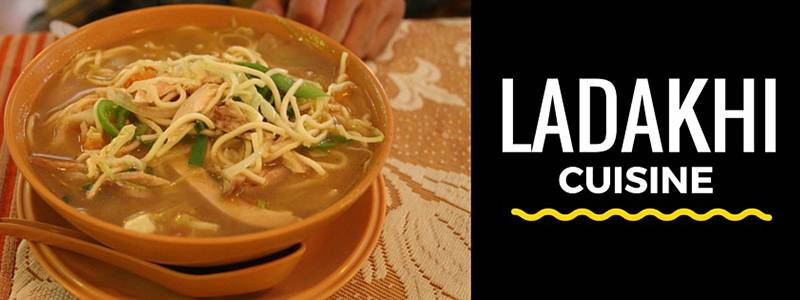
Influenced greatly by Tibetan, Chinese and Indian cultures, the Ladakhi cuisine is a wonder of its own. While on the road from Manali to Leh, or Srinagar to Leh or anywhere in Ladakh, do not expect much. Maggi is mostly available in every nook and corner and also daal and rice with some curry sometimes. At some places you would get Thupka as well which is a kind of local noodle soup with vegetables and chicken. Thupka is always a good option while travelling as it’s tasty, fills your tummy and also helps you stay hydrated.
While Maggi noodles is one of the staple items you’ll find all around, other local dishes are sure to get your stomach grumbling.
1. Thukpa
This delicacy is one the most popular dishes of Ladakh. Along with Maggi, Thukpa can be found almost anywhere. The dish includes noodles in a piping hot soup, complimented with boiled vegetables or some meat.
2. Chang
This is Ladakh’s native brew, which includes fermentation of millet with yeast in a porcelain pot. Warm water is added to the preparation, creating a delicious liquid called Chang.
3. Skyu
Skyu is a traditional dish made of kneaded wheat flour dough. Cooked mainly with water, it is served with meat or vegetables.
4. Khambir
This traditional bread of Ladakh is served mostly with the traditional butter tea.
5. Momos
Though not a native Ladakhi dish, momos will surely become your favorite meal. A momo consists of dough made with white flour and water. Minced vegetables, meat or cheese are stuffed in the dough and steamed, after which, served hot with soup or chili sauce.
11) Things To Keep In Mind While Traveling In Ladakh
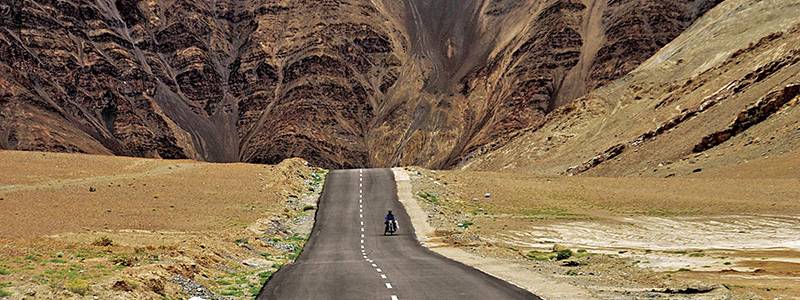
1. Treacherous Water Crossings on Bike
You may need to do lot of water crossings through-out Ladakh. Most of them would be easily passable but some may require little manoeuvring. These water crossing tend to become stronger as day progresses and by late evening some of them become impassable. So it’s always better to plan your day such that you reach your destination by evening.
2. Plan for Uncertainties
Keep extra/buffer days in your itinerary. You must keep 1-2 days as buffer days in your plan and have an alternate itinerary or be flexible in your itinerary. Road blocks due to bad weather, small land-slides, and a fallen tree on road is all it takes to cause you some delay.
3. Acclimatization & High Altitude Sickness in Ladakh
In very simple statement “Acclimatization is the key to a successful Ladakh trip”. If you are not properly acclimatized, then it can spoil the fun of the whole trip. Here are few suggestions & precautions to help you get your bodies acclimatized:
- By far the best way to acclimatize is slow ascent, so Srinagar – Leh Highway is the best option.
- If flying into Leh then you must keep a day or two for relaxed stay in Leh that allows body to adjust to rarefied oxygen environment. When you arrive in Leh, remember that you are at an altitude of 3500m and your body needs time to adjust to this height.
- Keep your bodies sufficiently hydrated. Keep taking frequent sips of water or juices.
- Must avoid smoking and alcohol consumption for first 3-4 days at least, especially if you are flying directly to Leh.
- If you get symptoms like headache, nausea, loss of appetite, dizziness, fatigue, difficulty in sleeping or a general unwell feeling then you should not climb any further. Either stay at the elevation you are or go down till you start feeling better.
4. Mobile Network Connection in Leh
Only post-paid mobile connections work in Ladakh (Jammu & Kashmir) and that too only of select operators. So, do carry a post-paid connection. BSNL has the maximum coverage in the area but data services at most places outside of Leh is not available. It best that you inform your near and dear ones that you would be out of touch from time to time.

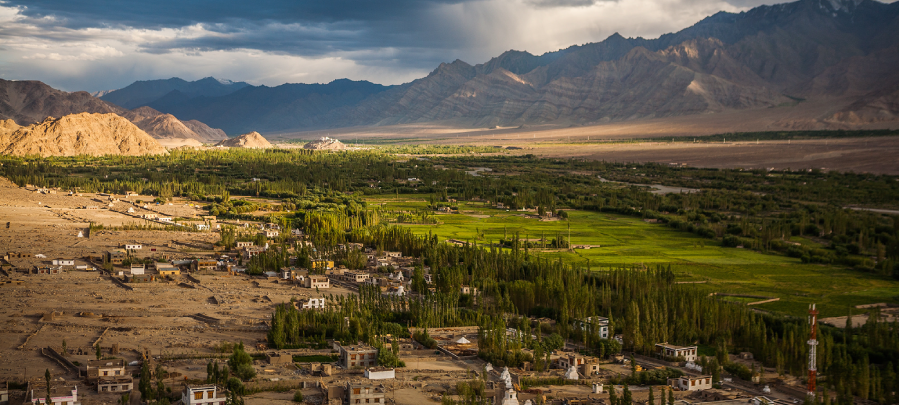
2 thoughts on “The Ultimate Guide to a Ladakh Trip”
Comments are closed.